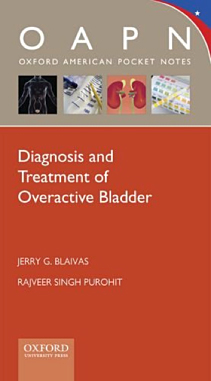Treatments for Incontinence
Can Medicines Work for Incontinence?
If you have urge incontinence, behavior modification (a bladder retraining process) or medications to stop involuntary bladder contractions (anticholinergics or tricyclic antidepressants) may be tried. Common antichholinergics include oxybutinin (Ditropan), Tolteridine (Detrol LA), Darifenacin (Enablex) and Fesoteridine (Toviaz). The most commonly used tricyclic is Imipramine (Tofranil).
Are there Medicines for Sphincteric Incontinence in men?
Sphincteric incontinence may be treated with medications which contain alpha-adrenergic agonists such as phenylpropanolamine or pseudoephedrine. These are medications, usually found in non-prescription cold remedies, that stimulate the muscles in the blood vessels in your nose to contract. It stops you from sniffing. They also make the smooth muscle of your sphincter contract and can help with the incontinence. If you want to try these kinds of medicines, just read the labels of your cold medicines, make sure that they have either phenylpropanolamine or pseudoephedrine and take then as if you had a cold.
Do these Medicines for Sphincteric Incontinence in Men work well?
The use of these medications is logical; it certainly makes sense that they should work. But more often than not, they do not work very well. Further, you should use them with extreme caution if you have hypertension (high blood pressure) because these medications can, and usually do, elevate blood pressure even further. If you have hypertension, you must discuss this treatment with your doctor.
What are other options for Incontinence?
All combined, these therapies are only occasionally very effective and, at this stage, many patients prefer to use absorbent pads which are changed as frequently as necessary to keep him comfortable. However, if the absorbent pads are unsatisfactory it may be necessary to resort to a condom catheter,penile clamp, or failing that, an indwelling catheter.
Biofeedback may also be tried either singly or in combination with medical treatment.
What are Periurethral Injections?
Another form of treatment that you might want to consider is the injection of substances into the urethra which are meant to compress it and thereby improve incontinence. Contigen® was widely used until 2011 when production was discontinued. We prefer Coaptite® but other options include Macroplastique® and Durasphere®.
What are Periurethral Injections Given For?
They are usually used to treat incontinence or leakage of urine. There are different kinds of incontinence and specifically these injections are usually used to treat stress or sphincteric incontinence which is the leakage that occurs with activity (e.g. walking, coughing or laughing).
How are Periurethral Injections Given?
The injection usually takes place in the office under local anesthesia. A scope is placed into the urethra and the Coaptite is injected through a needle that goes through the scope which allows the area that will be injected to be directly visualized.
How Well do Periurethral Injections Work?
What are the Advantages or Disadvantages of Periurethral Injections for Incontinence in Men?
Periurethral injections typically only take about 15-20 minutes to be performed with only mild discomfort. Success is not high for patients who have significant incontinence. On the other hand, a few patients with mild incontinence have had excellent results for as long as several years. The most common adverse effect is difficulty urinating, which usually resolves a few days after the procedure.
What is the Artificial Urinary Sphincter?
How does the Artificial Urinary Sphincter Work?
The artificial urinary sphincter is comprised of three silicone components: a cuff which surrounds the urethra, a balloon reservoir that stores fluid, and a pump that is used to open and close the cuff. The device works in a semiautomatic fashion, with the cuff remaining closed at all times except when the patient opens it by pressing on the pump (located in the scrotum) to urinate.
How Well Does the Artificial Urinary Sphincter Work?
Mesh Slings for Male Incontinence
Slings made up of mesh have traditionally been used to treat incontinence in females but over the last decade these have also been increasingly used for incontinence in men. There are different kinds of mesh but the most common are the AdVance male sling, the InVance Sling, and more recently the Virtue Male Sling.
What are the advantages of the AdVance Male Sling?
The surgery to place the sling is fairly straightforward and most patients will be discharged home the day after surgery. It can be used for mild and moderate amounts of incontinence and works well particularly in men who have remaining sphincteric function. In addition to this there are no pumps to push on to urinate (unlike the artificial urinary sphincter) and patients can void as they normally would in the bathroom.
What are the problems with the AdVance Male Sling?
Patients must restrict certain types of movements such as spreading their legs and minimize any heavy lifting or sports for at least 3 months afterwards. Additionally, for severe incontinence or total incontinence, Male Slings will often not make patients fully dry. More recently there has been general concern about the use of mesh in people. Complications reported include erosion of the mesh into the urethra and the development of infections of the mesh. Although the data is still out on this, it is probably less common than it is in women but if it occurs AdVance mesh erosion and/or infection can be very challenging to treat.
Which is better the AdVance Male Sling or the Artificial Urinary Sphincter?
We are concerned about that the use of mesh in the human body has not been full evaluated and there may be complications such as an infection of the mesh that can be difficult to treat. For this reason we prefer the Artificial Urinary Sphincter which has many decades of data as well as experience (including our own) behind it.
———
Why Choose a Uro Center Urologist in New York?
The urologists at the Uro Center in New York are experts in their field, bringing academic and research based innovation to the clinical forefront. Our urology team specializes in areas of treatment such as: robotic surgery, reconstructive urology, men’s health & infertility, kidney stones, urologic oncology, penile implant surgery, urethral stricture, BPH, Urinary incontinence treatment, Mesh complications, Enlarged prostate treatment, Urodynamics, vesicovaginal fistula and female incontinence in New York.
Request an Appointment











